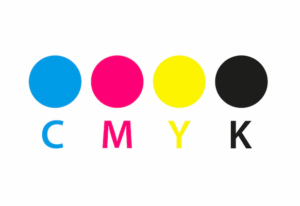How to Clean Metal & Maintain Your Nameplates
Metal nameplates are a common sight in various settings, from industrial equipment to household appliances. Over time though, metal nameplates can accumulate dirt, grime, and rust. This not only detracts from their appearance, but it can also make them difficult to read. That’s why it is important to maintain your nameplates and know how to clean metal.
Cleaning metal nameplates is an essential part of maintaining their readability and prolonging their lifespan. Whether you’re looking to restore an old nameplate or keep a new one looking its best, this guide will provide you with the information you need to keep up their appearance.
In this blog, we will discuss various methods and tips for cleaning metal nameplates, so they can continue to serve their intended purpose for years to come. But, before we dive into the specific methods of how to clean metal nameplates, let’s discuss some of the factors that contribute to metal deterioration.
Factor That Damage Metal
Abrasions
Metal nameplates are often subjected to various types of abrasion that can cause damage to their surface. Abrasion is the process of wearing away a material’s surface due to friction or rubbing against another surface. Metal nameplates can be exposed to different types of abrasion, such as scratches, scuffs, and impacts.
For example, in industrial settings, metal nameplates may be exposed to abrasive chemicals, high temperatures, and rough handling, causing them to wear out over time. Similarly, in household appliances, metal nameplates can be prone to scratching due to repeated cleaning or exposure to sharp objects.
Abrasion can not only detract from the appearance of the nameplate but can also make it difficult to read, reducing its functionality. To prevent abrasion, it is essential to know how to clean metal nameplates using appropriate methods and avoid exposing them to harsh environments.
Corrosion
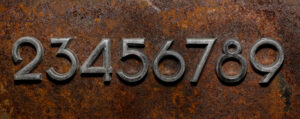
Metal is prone to corrosion due to its inherent chemical properties. Most metals have a natural tendency to react with oxygen in the air, forming metal oxides. This process, commonly known as oxidation, can weaken the metal’s surface and eventually lead to the formation of rust.
The rate of oxidation can be influenced by various factors such as the type of metal, humidity, temperature, and the presence of other chemicals. For example, metals like iron are more prone to rusting in moist environments, while metals like aluminum are more resistant to corrosion due to the formation of a protective oxide layer on their surface.
In addition, exposure to acidic or alkaline substances can accelerate the corrosion process, making metal more susceptible to damage. Overall, the chemical properties of metal make it prone to corrosion, and proper maintenance is essential to prevent or minimize the effects of corrosion over time.
Chemicals
Depending on the factors like your industry or work environment, the metal nameplates can be exposed to a number of different chemicals that can damage the quality of the metal. Exposure to certain chemicals can cause corrosion, discoloration, and other forms of degradation.
For example, acidic chemicals can dissolve the protective oxide layer on metal surfaces, leaving them vulnerable to corrosion. Similarly, alkaline chemicals can react with the metal, causing it to become discolored or even dissolve.
In industrial settings, metal nameplates may be exposed to a range of chemicals, including solvents, acids, and cleaning agents, making them particularly vulnerable to damage. Additionally, even household chemicals like bleach or ammonia-based cleaners can damage metal nameplates if used improperly.
Environment
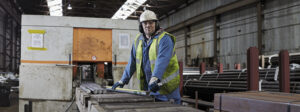
The environment surrounding a metal nameplate can also have a significant impact on the metal’s condition over time. Exposure to elements such as moisture, UV light, and temperature fluctuations can all contribute to metal corrosion and deterioration.
For example, prolonged exposure to moisture can lead to the formation of rust on the metal’s surface, while exposure to UV light can cause discoloration and weakening of the metal. In addition, extreme temperature fluctuations can cause metal to expand and contract, leading to stress and potential cracking.
The environment in which a metal nameplate is located can also affect its exposure to chemicals, abrasion, and other forms of damage. Therefore, it is essential to consider the environmental factors when deciding where to place a metal nameplate and to take appropriate measures to protect it from potential damage.
This may include using protective coatings, storing the nameplate in a controlled environment, and conducting regular inspections to ensure its ongoing condition.
Methods of How To Clean Metal Nameplates
Preserving your metal nameplate requires taking preventative measures to minimize the risk of damage from various sources. The methods of how to clean metal nameplates depends on the type of metal used, so it is crucial to know the different techniques for each type in order to keep your nameplate in prime condition.
*Pro tip: Avoid power or pressure washing your nameplate because it can damage the metal, finish, or graphics.
Next, we will discuss the measures you can take to learn how to clean metal nameplates.
Aluminum Cleaning Tips
Aluminum nameplates are a popular choice for industrial equipment and consumer products due to their lightweight and durable properties. Cleaning an aluminum nameplate requires a gentle approach to avoid damaging the metal’s surface.
To start, remove any loose dirt or debris using a soft cloth or brush. Next, create a cleaning solution by mixing a small amount of mild detergent with warm water. Apply the solution to the nameplate using a soft cloth or sponge, being careful not to scrub too hard, which can cause scratches or other damage.
Rinse the nameplate with clean water, and wipe it dry with a soft cloth. Avoid using abrasive cleaners or tools, as well as high-pressure washers or steam cleaners, which can damage the metal’s surface. If the nameplate has stubborn stains or marks, consider using a specialized aluminum cleaner or polish.
Stainless Steel Cleaning Tips
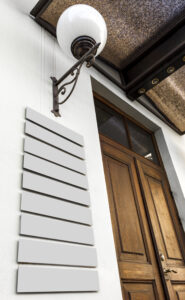
Stainless steel is arguably the most desired material for metal nameplates due to its durability, corrosion resistance, and sleek appearance. It can withstand harsh outdoor and indoor environments without rusting, fading, or tarnishing, making it ideal for long-term use.
The strength of stainless steel also allows for intricate designs and precision engraving. This makes it a versatile option for nameplates used in a variety of applications.
Additionally, stainless steel nameplates are easy to maintain and can be cleaned with simple household cleaners or mild soap and water. Wipe the surface in the same direction as the natural lines of the metal. Its non-porous surface prevents dirt and grime from accumulating, making it a hygienic choice for medical, food, and chemical industries.
Brass Cleaning Tips
While brass is still a popular option for its glowing hue, it is not an ideal choice for outdoor nameplates or harsh environments. To clean a brass nameplate, you can use the same method or a similar one as aluminum.
Cleaning a brass nameplate requires some care and attention to avoid damaging the surface. Begin by wiping the surface of the nameplate with a soft cloth or sponge dampened with water or a mild cleaning solution. Avoid using abrasive cleaners, as these can scratch or damage the surface of the brass. A mixture of water and vinegar or lemon juice can be used to gently remove tarnish and restore shine.
For more stubborn stains or tarnish, a paste of baking soda and water can be applied to the surface, rubbed gently, and then rinsed thoroughly. Once the nameplate is clean, dry it immediately with a soft cloth to prevent water spots.
It’s also essential to avoid exposing brass to moisture or harsh chemicals that can cause discoloration or corrosion. With proper care and maintenance, a brass nameplate can last for many years, retaining its shine and beauty.
Get Durable Nameplates With Hallmark Nameplate
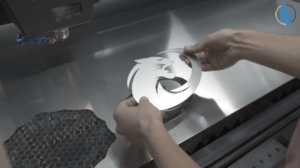
Cleaning and maintaining your metal nameplate is a simple but essential process that can significantly impact its longevity and appearance. By following the tips outlined in this article, you can keep your nameplate looking brand new.
Remember to choose the right cleaning solution, avoid abrasive cleaners, and dry your nameplate thoroughly after cleaning to prevent water spots. Additionally, be mindful of the environment in which your nameplate is placed, as exposure to moisture and harsh chemicals can damage its surface.
With proper care and maintenance, your metal nameplate can last for many years and continue to be an excellent representation of your brand or business. At Hallmark Nameplate, we specialize in creating high-quality metal nameplates that are built to last.
Contact us today to learn more about our custom metal nameplates. Request a quote to see how we can help your business stand out.

